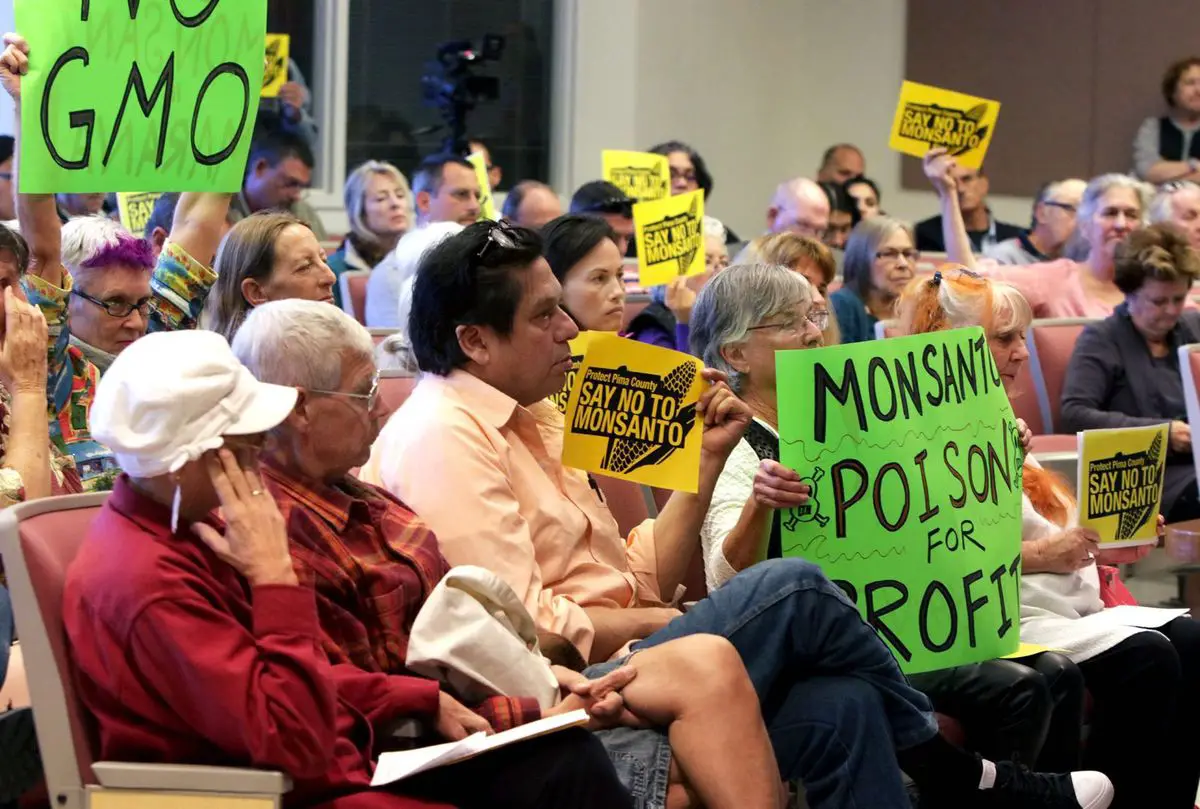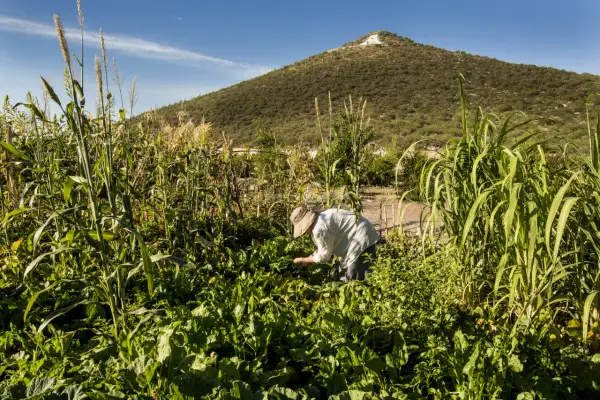
Photo via Ron Medvescek/Arizona Daily Star
While Monsanto is still finalizing its deal with the German agrochemical and pharmaceutical giant Bayer, the company is still actively expanding in the United States, even in the face of protest movements.
In Argentina, protesters recently shut down the building of a flagship Monsanto seed plant with months of determined activism and marches through the streets.
Meanwhile in the southwest United States, Monsanto is once again facing opposition from concerned local residents, who say that building a GMO seed development greenhouse in one of the most sacred and historically rich native agricultural areas in the United States is “like putting a factory in a nature sanctuary.”
With so much financial incentive to build the Monsanto location, many are concerned that the company will end up getting their way yet again, and turn one of the United States’ most hallowed farming areas into a GMO testing ground.
Will Monsanto Plant its Flag in Pima Valley?
As the first city in the United States to be designated a World City of Gastronomy by the United Nations Educational, Scientific, and Cultural Organization (UNESCO), the Tucson area has long been one of the most cultural and production-rich areas in the country for growing food.
The city and its surrounding area is said to have the longest agricultural history of any in North America, going back more than 4,000 years.
As the blog Edible Baja, Arizona put it:
“Three thousand years after the first farmers of the Sonoran Desert settled in the Santa Cruz River valley, missionary Father Eusebio Francisco Kino traveled on horseback from Mexico to an O’odham (Native tribal) village called Schookshon—meaning “below the black hill”—and found a community of 750 people thriving on cactus and mesquite, tepary beans and sunflowers, corn and squash. In 2000, archeologists dug below the surface of a decidedly modern city and “found evidence of habitation preserved in every layer, going back 4,000 years.'”

The Tucson area is one of the oldest continually farmed places in North America. Photo: Jeff Smith
The above passage was written by Jonathan Mabry, the historic preservation officer for the City of Tucson, who wrote and researched much of the UNESCO application.
Despite opposition from locals, Monsanto is still hoping to plant its flag right in the heart one of the most sacred and historically rich farming areas in the country.
The plan involves building a new greenhouse for between 400,000 to 500,000 GMO and conventional corn plants, a venture that is expected to bring between 40 to 60 jobs and $105 million in investments to the area.
While it has been said that Monsanto will not be open air testing its GMOs in the area (although they did leave the door open saying they would not grow “many if any” according to Tucson.com), the presence of the company itself, which has been known to get its way through government collusion and high stakes, big money lobbying, is troubling to many locals. And who knows what the future will bring from a company responsible for so much environmental devastation.
Protesters Take on Monsanto
On Tuesday, November 22, protesters packed a local Pima County Board of Supervisors meeting, holding up a swath of yellow signs reading, “Say no to Monsanto.”
Some speakers began crying as they addressed the board, hoping to keep the notorious agrochemical giant out of their backyard. One even pledged to protest the construction of the plant, citing the ongoing Standing Rock protests as inspiration.
At stake is whether or not to extend a special tax zone to Monsanto allowing it to build its plant on 155 acres that have already been purchased in the town of Marana, which rests just near Saguaro National Park.
But the area is full of mostly small farmers and residents wonder why the county would choose to invest in a massive multinational company, rather than its own people.
“Marana is a poor farming community,” speaker Wendy Wiener said according to this article from Tucson.com, echoing the concerns of many others who were present. “Why don’t we give them tax breaks?”
A smaller contingent including Tucson Metro Chamber CEO Michael Vrney spoke in favor of the approval, citing Monsanto’s “demonstrated history of innovation.”
But when a company’s full history also includes widespread destruction to human health and the environment (see this harrowing photo essay for more info), it’s fair to wonder whether Varney and other officials know exactly what they’re getting themselves into.
Will Monsanto Be Allowed to Build?
With so much at stake (and so much to gain financially for the area), will Monsanto be allowed to have its way, or will the area take action to help maintain and preserve its rich, natural agricultural history?
According to Tucson.com the county voted to establish an Agricultural Science Advisory Commission with a stated goal of addressing concerns raised by the speakers.
Monsanto is hoping to be granted foreign trade zone status, which would lead to substantially smaller property taxes over the next 10 years.
A final decision was also delayed to February 21 after a unanimous 5-0 vote.
But with Monsanto so heavily invested in the area and dollar signs in the eyes of so many hoping to get a piece of the pie, it’s going to be an uphill battle to keep the agrochemical and GMO giant out of the Tucson area, something the (wildly successful) Argentinian protesters (see here for more) know all too well.
Thanks for reading! For more info on this story, check out the Tucson.com article here. Residents of Arizona or Pima County can find a list of 7 actions to take here. You can also sign a petition against the Monsanto plant in the Tucson area by clicking on this link.
Thanks for installing the Bottom of every post plugin by Corey Salzano. Contact me if you need custom WordPress plugins or website design.




